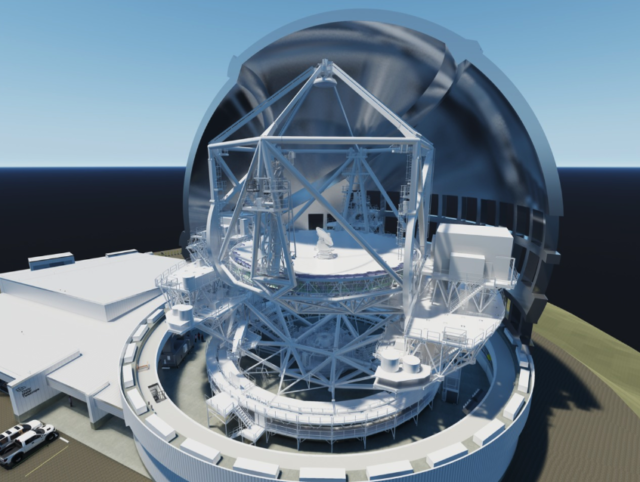Recently, there have been some who question the usefulness of astronomy in general and the value of the Thirty Meter Telescope in particular (Civil Beat Community Voice, “Will The TMT Really Contribute To Astronomy?” Aug. 10).

Other commentators have already pointed out several well-known, very practical benefits of astronomy, such as the monitoring of solar activity (space weather), the discovery and tracking of near-Earth objects to watch for those that might strike the Earth someday, timekeeping and navigation.
One that I have not seen mentioned is the Global Positioning System, which depends critically on astronomical observations. The ability of the GPS in your phone or car to determine your location to an accuracy of less than a meter requires knowledge of the Earth’s precise orientation in space.

A 3D rendering of the Thirty Meter Telescope showing the telescope pointing vertically inside its enclosure. The author says that the TMT will be unsurpassed in its performance of fundamental astronomical research.
Credit: M3 Engineering
The Earth wobbles unpredictably because of weather systems, ocean currents and land and ice movements; the rotation rate also varies slightly. Observations of distant quasars, using a radio astronomy technique called Very-Long-Baseline Interferometry, allows scientists to keep track of the Earth’s random orientation changes to the degree of accuracy needed for GPS. The Very Long Baseline Array antenna on Maunakea plays a key role in this.
VLBI was developed for astronomy beginning about 50 years ago. Its most recent astronomical success is the well-publicized imaging of the black hole Pōwehi. Nowadays VLBI benefits us all by making precision GPS possible.
The author of the previous letter is also off the mark in his comparison of TMT to other very large telescopes. TMT will be the only telescope of this size in the Northern Hemisphere and thus able to observe that portion of the universe. It will serve as an essential partner to telescopes in the Southern Hemisphere.
At an altitude nearly twice that of the others, it will be able to observe at mid-infrared wavelengths, which are especially important for detecting molecules in planetary atmospheres. The truly unique advantage of its Maunakea site over other sites is the low atmospheric turbulence, which will allow TMT to obtain images 12 times sharper than is possible with the Hubble Space Telescope.
Even the longitude, in the middle of the Pacific, is important for tracking transient events, moving objects and for VLBI. No other major observatory is close to the longitude of Hawaii.
In summary, TMT situated on Maunakea, will be unsurpassed in its performance of fundamental astronomical research, while at the same time providing many benefits to the community at large through career opportunities, eventual application of its technology to everyday uses, and perhaps most important of all, a deeper understanding of the physical universe in which we live.








